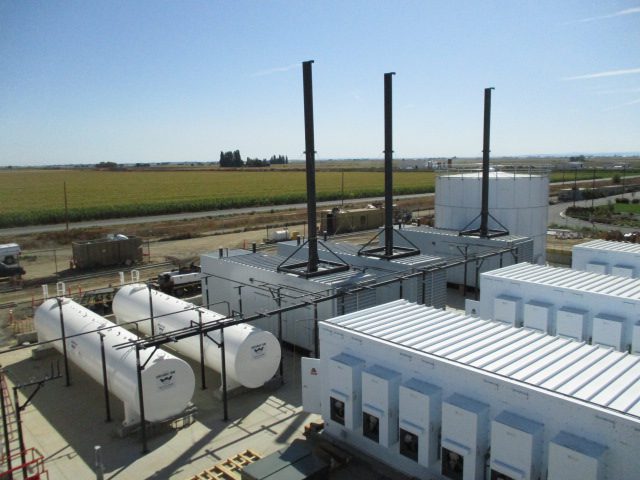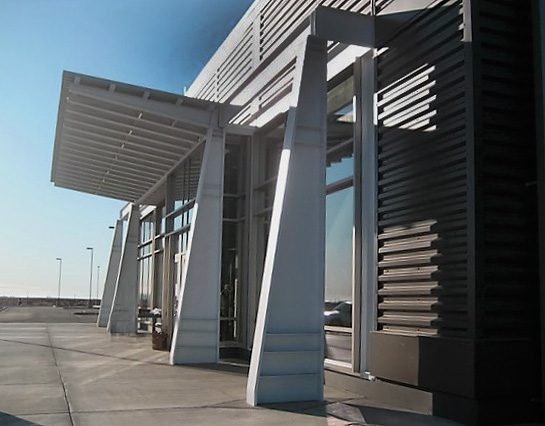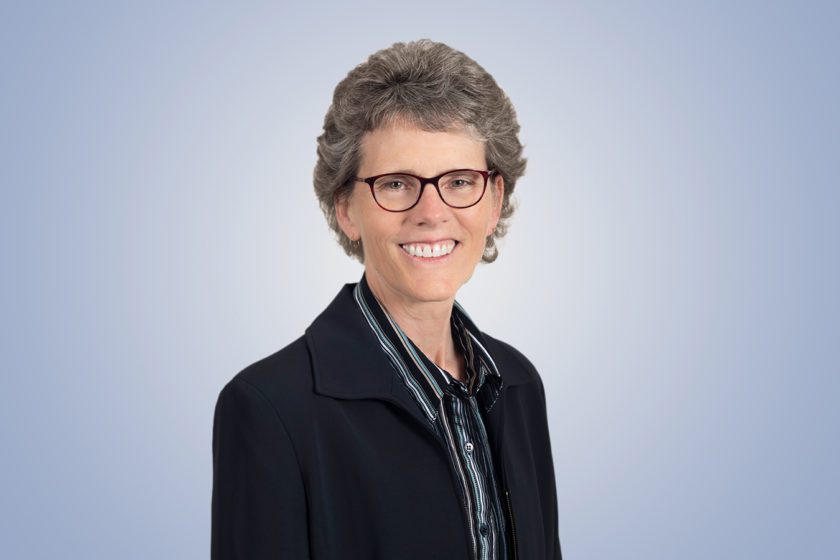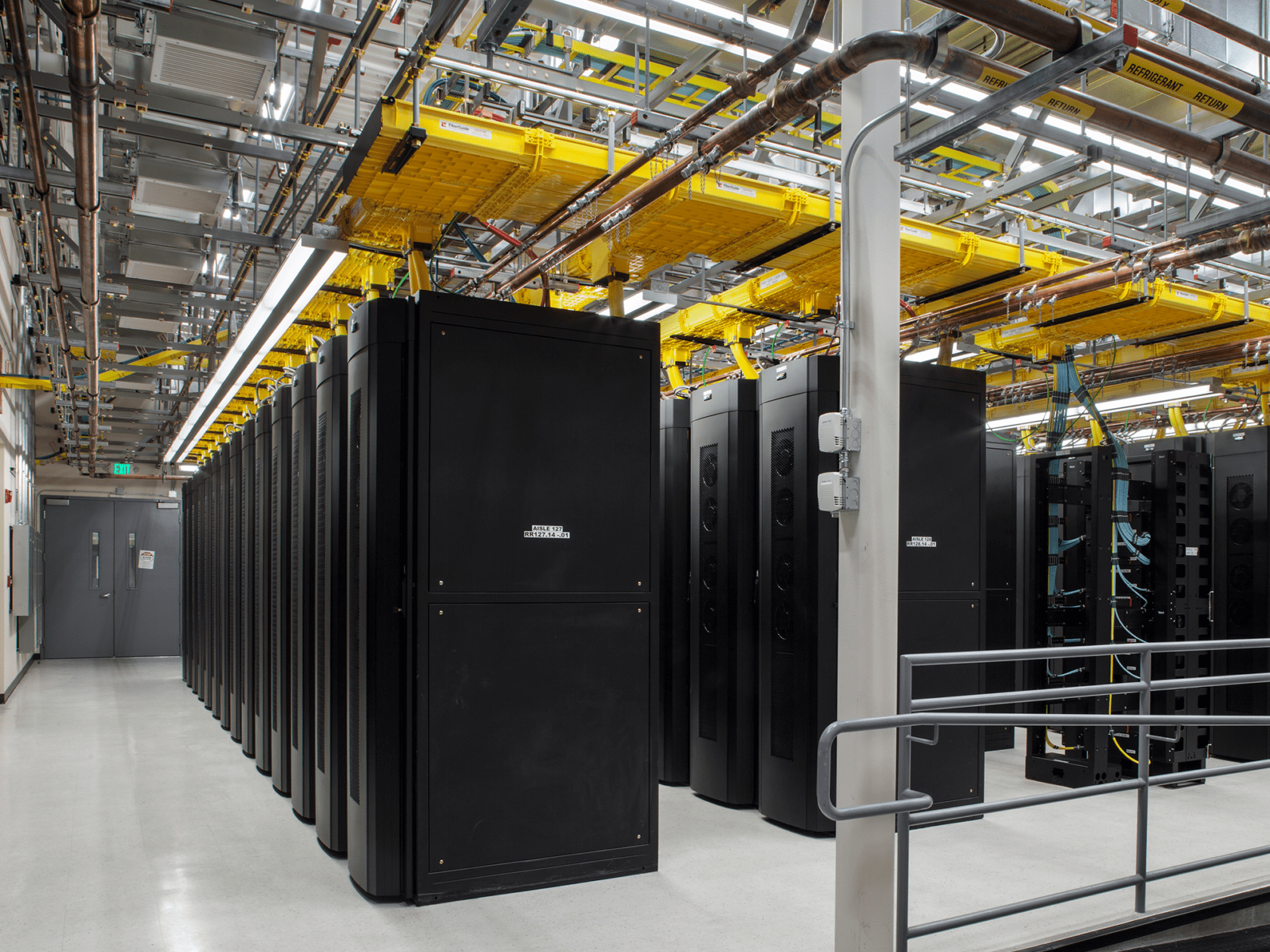News & Insights
Design for data centers: effective strategies for a rapidly transforming future
With the rapid pace of technological change, the requirements for data centers are evolving requiring architects and consulting engineers to continually innovate. This article highlights considerations and current trends in design for data centers.

Data centers are the backbone of the digital economy powering everything from websites and apps to cloud computing and the Internet of Things (IoT). As such, the design of data centers has a significant impact on the performance, efficiency, and reliability of how data is delivered and stored.
With the rapid pace of technological change, the requirements for data centers are evolving requiring architects and consulting engineers to continually innovate. This article highlights considerations and current trends in design for data centers.
Differences in design for co-location and enterprise data centers
Co-location data centers and enterprise data centers share common elements, but the difference in who owns the data and how it is used impacts design strategy.
Co-location data centers are built with the intention of leasing space to tenants. Used by small and medium-sized businesses (and by larger companies to expand their existing capacity), these data centers are designed to provide a high-density environment that can accommodate a variety of customers in various size spaces. These spaces can be secured with cages dividing their area or a tenant can take a full quadrant depending on how the data center is designed. The data center is intentionally standardized and consistent so that tenants can bring their own equipment to integrate seamlessly with the infrastructure.
Enterprise data centers are owned and operated by a single organization. These types of data centers tend to require custom solutions for their specific use case. The organization owns and operates the facility and is responsible for procuring the design and construction. They are designed to accommodate the organization’s unique IT infrastructure and support long-term growth needs.
Salas O’Brien has design architects and engineers with deep knowledge and experience designing data centers in context. We work with and guide the client through the highly technical process of building a facility that is future focused.

Designing data centers for planned scalability
Demand for data storage and delivery can be unpredictable. One effective method for achieving scalability is through phased implementation. This approach involves building the data center in stages, starting with the core and shell, an administrative area, and the first data hall. Subsequent data halls are added consecutively.
This phased approach spreads out the cost of construction while facilitating speed to market. Phasing also gives clients the flexibility to adapt technology and processing requirements in later phases.
Architects pay close attention to how the phases are separated, making certain proper safety and security measures are in place. The design ensures that each phase can be built out independently with their dedicated generators, UPS, technology, and cooling systems while maintaining the previous phases fully operational.
Designers can leverage prefabrication for components such as containerized electrical modules or generators built with acoustic enclosures. These are factory-tested and pre-configured, then sent to the site as a package. Whole back up buildings can be fabricated off site. This modular approach to construction makes scalability even more rapid and achievable.

Design to disperse heat
Data centers are necessarily tall to move air and disperse heat.
A best practice is hot aisle/cold aisle containment—which is effective in both new build and retrofits. A “cold aisle” refers to the aisle where cool air is delivered to the server racks. This cool air is used to keep the servers and other equipment at their optimal operating temperature. The “hot aisle” is where the warm exhaust air from the servers exits the racks and is either directly vented out of the building or returned to the air conditioning unit to be re-cooled before delivered back into the cold aisle.
This layout creates an efficient airflow pattern that helps keep the servers and other equipment cool. By separating the cool air intake from the warm air exhaust, the mechanical system can effectively remove heat from the server racks, which is especially important in large data centers where many servers are housed in a relatively small space.
As the computer has developed, it has been designed to operate in higher temperatures making the use of outside air for cooling more prevalent. This passive cooling approach is much less expensive than mechanical cooling and if extra cooling is needed the AHU can operate very much like your home air conditioner sitting in your window only on a much larger scale.
Where possible, Salas O’Brien designs passive cooling systems which take advantage of already cool outdoor air pulling it directly into the distribution system. If the directive is to cool to 75°F and the exterior temperature is 65°F the energy savings can be substantial. Even in traditionally warm climates like Phoenix, there are many months with days below 75 degrees where this system can be used.

Sustainable design strategies
Data centers are power hungry, so it is difficult to design for net zero output without having renewable power generation like solar or wind on the site. However, it is possible for data centers to achieve LEED certification and to be designed with sustainable strategies.
The use of ‘green power’ is often incorporated especially if the data center is located close to hydroelectric power generation. The contractors can recycle concrete on site where demolition of previous structures is involved. Careful separation of construction waste will promote recycling and limit landfill. Concrete mixtures can be designed to meet LEED by the use of additional fly-ash and utilizing local production plants. The office space will utilize daylighting and shading strategies. They will also incorporate LEED certified materials like GWB, carpet, finishes such as paint with low VOCs and wood in casework.
One strategy is including monitoring and management systems, BAS (Business Automation System) to ensure that the data center is operating at peak efficiency and that any issues are identified and addressed quickly. This can include monitoring the temperature, power usage, and cooling systems, as well as the use of remote management tools to allow for the monitoring of the data center from anywhere and be able to respond quickly to adjustments in the power and cooling systems.
Edge is driving integration into communities
Data centers are built to be secure. They are tall, heavy, have large ventilation louvres, and lack windows by design.
This is fine when the data center is in a remote location. But increasingly, the trend is to edge computing where data processing and storage resides closer to the edge of the network to reduce the latency. This places data centers in cities where they have to comply with a jurisdiction’s design standards.
Normally tall multi-storied office buildings have windows, floors, parapets, and stairs, but data centers may not have these advantages. Architects have to be creative in order to articulate shadow pattern, color, texture and building modulation so the exteriors will be approved. These designs can be very challenging to integrate the aesthetic needs with the technical requirements necessary.
Data centers in communities also require greater acoustic design for sound isolation and noise control from the heavy equipment and cooling systems so that they can meet noise ordinances. Mitigating noise is more easily done while the building is in design. After construction, mitigating noise can become an expensive exercise.
When most designers talk about the built environment, the focus is on designing for people. A data center has the unique context of being designed for machines and must integrate many heavy technical systems as well as designing for the people who operate the facility.
Salas O’Brien has deep experience in the architectural, structural, mechanical, electrical, and acoustic needs of data centers. Contact us to learn more.
For media inquiries on this article, reach out to Stacy Lake.

Brenda Ross, NCARB, AIA, LEED AP
Brenda Ross is an expert in data center architecture and design with depth of experience in co-location, enterprise and edge data centers. She serves Fortune Top 10 clients through startups utilizing a colocation cage. She is dedicated to helping organizations build the most efficient and reliable data center facilities possible. Brenda serves as a Principal at Salas O’Brien. Contact her at [email protected].

